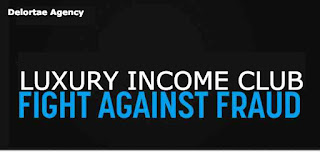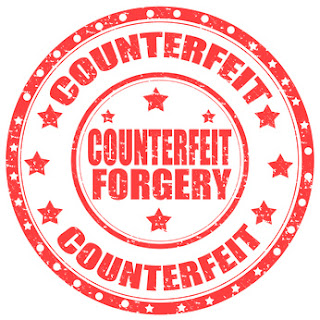 |
| Reverse view of 2002 old style note |
Luxury Income Club fight against fraud warn British shoppers to check their new £5 notes aren't counterfeit as online scammers launch an online scam ahead of the Xmas rush.
The old British banknotes are the being used and but reports from MSN money says the new £5 polymer note is also being used. Despite the Bank of England introducing a number of features to counteract fraudulent copies of the new polymer notes, they are warning people to remain vigilant and check their notes.
In the first half of 2016, approximately 152,000 counterfeit banknotes were removed from UK streets. Last year, the value of notes seized was over £5 million.
Ben Crosland, Senior Manager of the Banknote Education team at the Bank of England, said: "Christmas is a busy time for both retailers and the public, and unfortunately it provides an opportunity for criminals to pass on counterfeit notes as payment.
"While we work hard to stay one step ahead of fraudsters, it is important people check security features on the £5, £10, £20 and £50 banknotes when they are passed in transactions."
Crimestoppers have received an increasing amount of reports that scam artists have been paying for goods on Gumtree and Facebook with the counterfeit notes when meeting the sellers in person.
Crimestoppers' Chief Executive Mark Hallas, said: "The purpose of this campaign is to raise awareness of counterfeit money, especially around Christmas when there are more transactions happening and money can be tight. Purchasing counterfeit notes can be tempting and many people do not realise that, not only are these notes completely worthless, but knowingly holding or passing them on is a crime.
People can also contact Crimestoppers anonymously with information on 0800 555 111, safe in the knowledge that they will never have to give a statement to police or go to court."
How to check if your £5 is real or fake
Check the see-through window and the portrait of the Queen is correctLook at the Elizabeth tower to check it is gold on the front of the note and silver on the back
Check the foil patches
On paper banknotes, feel for raised print across the words 'Bank of England'
Also on paper notes hold it up to the light to check the watermark and look for the metallic thread running through every genuine paper note
Thousands of people slated the Bank of England last month after they were shocked to discover the notes contained animal fat .
The Bank of England said the supplier of its new £5 note is looking at "potential solutions" to change the materials that make their new note to make it vegan-friendly.
The Bank said it was "aware of some people's concerns" about traces of the derivative, known as tallow, in its polymer note since being introduced into circulation in September.
A number of notes have also sold for astronomical levels after collectors forked out up £80,000 for ones with rare serial codes.
Some collectors are willing to pay more than 40 times the monetary value of the note for the chance to claim that they own a polymer £5 note that is among the very first the Bank of England ever produced,
Go to fakenotes.co.uk for more information.
Download the Luxury Income Club Online Scam Survival Guide for more help, tips and advice.
Remember; if something looks too good to be true, it usually is. Share with us your experiences of possible fraudulent activity and we will ensure it is followed up with the relevant authorities and happy shopping.
✿ » For trusted authentic luxury products and services, visit The UK's Most Trusted Online Reseller
If you enjoyed this post, please consider sharing it, leaving a comment or subscribing to the RSS feed to have future articles delivered to your feed reader.
RELATED ARTICLES
» Britain's Black Friday Sales Fight Online Fraud
» Luxury Group Kering sues Alibaba for helping Counterfeiters
» Bank of China Complies With Subpoena In Gucci Counterfeit Case
» Taobao Teams Up With Apple, Gucci To Remove Counterfeit Products
» Louis Vuitton Files Suit in Connection with Counterfeit Goods on Alibaba

If you enjoyed this post, please consider sharing it, leaving a comment or subscribing to the RSS feed to have future articles delivered to your feed reader.
RELATED ARTICLES
» Britain's Black Friday Sales Fight Online Fraud
» Luxury Group Kering sues Alibaba for helping Counterfeiters
» Bank of China Complies With Subpoena In Gucci Counterfeit Case
» Taobao Teams Up With Apple, Gucci To Remove Counterfeit Products
» Louis Vuitton Files Suit in Connection with Counterfeit Goods on Alibaba











